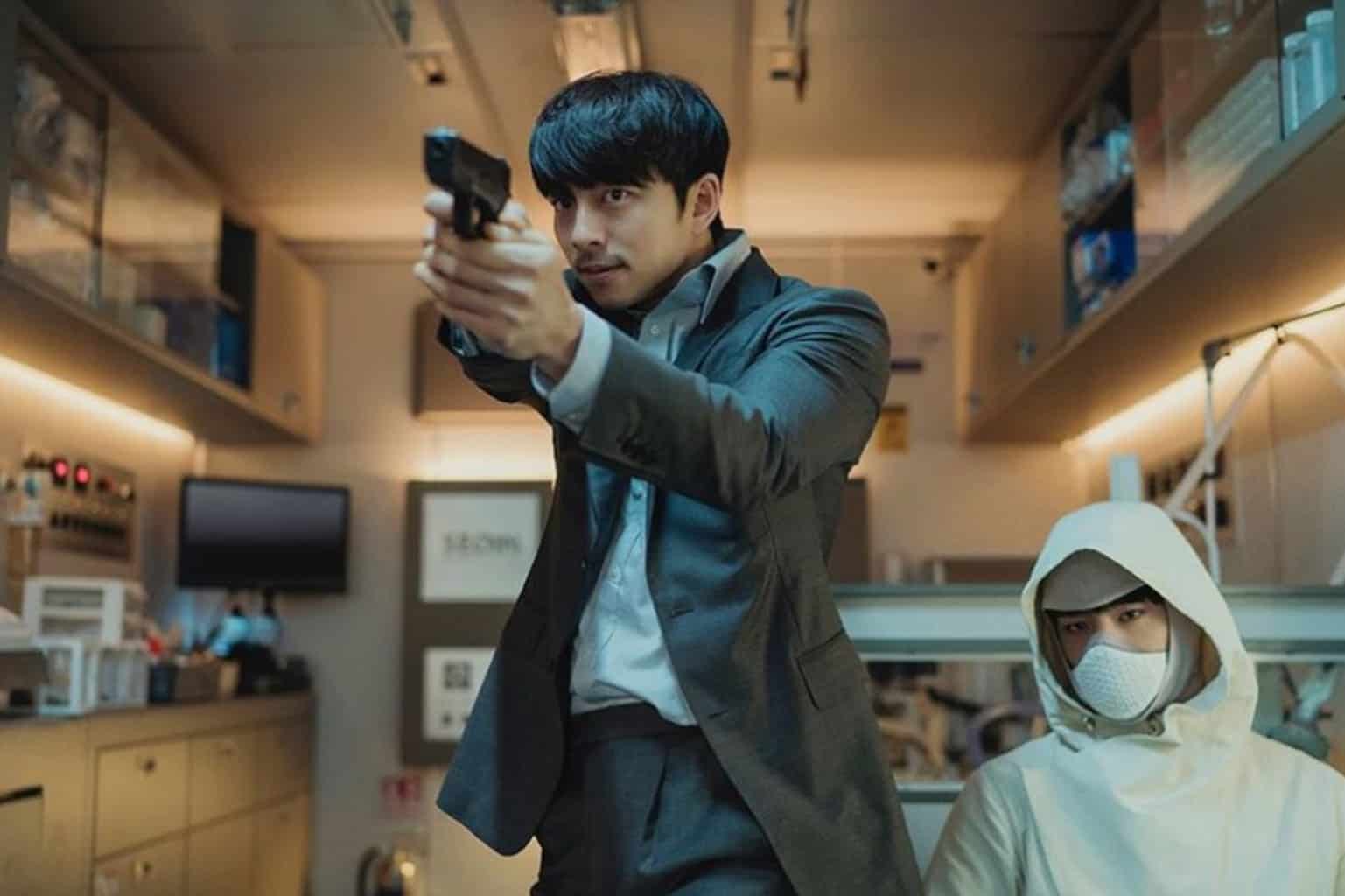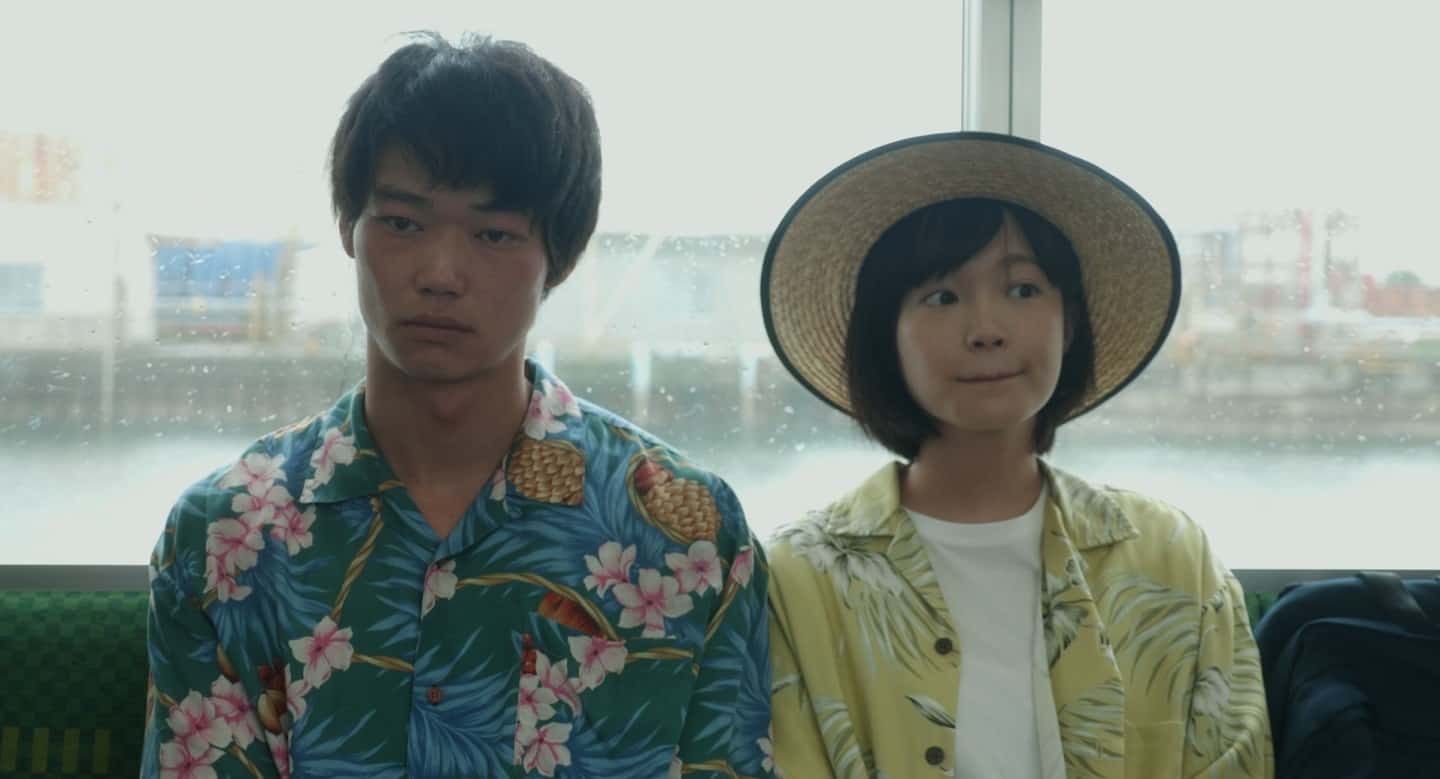“Cocolors” won the Satoshi Kon Award for Excellence in Animation at the Fantasia International Film Festival in Montreal. This short film is an excellent example of a simple idea that has been shaped into an amazingly heartfelt film full of meaning.
“Cocolors” screened at San Diego Asian Film Festival

The film introduces a subterranean society where the people all wear something resembling either a spacesuit or old-fashioned diving suit, complete with a large helmet that obscures their faces. A group of children are playing around in this underground world that is crowded with machinery. One of the children, Fuyu, is unable to speak, communicating solely through the use of a horn like an instrument that can emit one, two, or three notes at a time. These stand for “yes”, “no”, and “ok”. Fuyu carries a picture of the outside world and hopes, along with his friend Aki, to see it someday. They talk with awe about a giant monster bird that is supposed to live above ground. When they get older most of Fuyu's friends join the troop assigned to travel to the surface world to survey and salvage what they can. We see that the earth has been devastated and is now unlivable. Aki brings back various colored crayons for Fuyu, which he uses to finish his picture, but is unable to bring back a color for the sky.
The hand-drawn animation style gives “Cocolors” a unique look and there is a great level of details in both characters and backgrounds. The design of the suits and the world itself draws on a steam-punk aesthetic, with machinery and trailing wires, a large fan that is presumably purifying the air. Very few things about the world are explained, but if you look closely you can understand a lot about how the society functions. The film uses digital computer animation to give characters and objects a three-dimensional feel and there is a palpable weight and solidity to everything. A color palette largely consisting of browns, yellows and greys beneath the ground, and almost entirely of black and white above ground, helps bring to life this post-apocalyptic world, where almost all vibrancy and life has been eradicated. The music likewise relies on very limited instrumentation. All of the voice actors do a good job, especially considering their characters faces are covered, so their dialogue carries a lot of weight.

“Cocolors” deals with a post-apocalyptic world where hope has almost been extinguished,
yet still persists in the hearts of its young protagonists. Although they have never seen the sky, or even the world above ground, they still have a longing for it. Its anti-war message is striking. It shows the aftermath of a nuclear holocaust, although the details are never expanded upon, with everything that entails. The world above ground has been plunged into an eternal winter, there is no greenery, no trees or flowers, no people, everything is dead. The people below ground are barely subsisting and their lives seem to have little meaning beyond that basic survival. Despite a short running time the film manages to create a believable world and society, including a religious element in the character of Gidoku. This character leads the others in rituals and seems to be in control of the group, though the significance of his position again is left to the audiences own interpretation. One of the great achievements of the film is its ability to transmit a powerful message and a lot of information about the world while saying very little. By using the metaphor of coloring a painting, the blank white pages, birds soaring in the sky, and more, the audience is forced to understand the film on the level of symbol and emotion rather than simply plot and character.

“Cocolors” is a powerful, beautifully crafted film. While the theme of nuclear weapons is hardly new to Japanese cinema, “Cocolors” paints a stark picture of the aftermath in a way that is devastatingly real. The world-building is interesting and leaves enough to the imagination that you go away from the film still trying to puzzle out certain elements. I would highly recommend this to fans of speculative science-fiction, steam-punk, and other imaginative works with a strong moral message.















